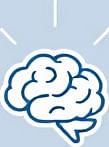Breathing Exercises as a Tool for Cognitive Load Offloading
 by Shanie Goodwin
by Shanie Goodwin
Discover how simple breathing exercises can help reduce stress and ease mental overload, making daily life more manageable for students and professionals. Learn practical techniques to enhance focus and productivity through easy-to-follow methods.

In our busy lives, managing mental demands can feel overwhelming. Cognitive load refers to the amount of working memory we use for tasks, and too much of it can lead to fatigue. Breathing exercises offer a straightforward way to address this by calming the mind and body.
Why Focus on Cognitive Load?
Many people experience high levels of mental overload from daily responsibilities. This can affect performance at work or school. By incorporating breathing exercises, individuals can create space in their minds, allowing for better processing of information. These techniques work by activating the body's relaxation response, which helps in clearing unnecessary thoughts.
The Basics of Breathing Exercises
Start with simple methods that require no special tools. For example, the 4-7-8 technique involves inhaling for four seconds, holding for seven, and exhaling for eight. This method promotes relaxation and can be done anywhere. Regular practice of such exercises builds a habit that supports overall mental health.
Another approach is diaphragmatic breathing, where you breathe deeply into the abdomen rather than the chest. This type of breathing increases oxygen flow and reduces tension. Over time, it aids in offloading excess cognitive demands by fostering a sense of calm.
Practical Tips for Everyday Use
To make breathing exercises part of your routine, try them during breaks. For instance, students might use them before studying to prepare the mind. Professionals could apply these techniques during meetings to stay composed.
Here are some steps to get started:
- Find a quiet spot and sit comfortably.
- Close your eyes and focus on your breath.
- Inhale slowly through your nose for a count of four.
- Exhale gently through your mouth for a count of four.
- Repeat for several minutes until you feel more centered.
These tips are adaptable for different situations, making them accessible for anyone. The key is consistency, as repeated use strengthens the ability to manage stress effectively.
Benefits Beyond Stress Reduction
Beyond immediate relief, breathing exercises contribute to long-term productivity. They help in maintaining focus during challenging tasks, which is essential for cognitive science enthusiasts. For example, after a session, you might notice improved concentration and less mental clutter.
In professional settings, these exercises can enhance decision-making by reducing emotional interference. Students often report better retention of information when they incorporate breathing into their study habits. The ripple effects include better sleep and higher energy levels, all of which support daily functioning.
Integrating with Other Strategies
While breathing exercises are powerful on their own, combining them with organization tools can amplify results. For instance, use them alongside to-do lists to prioritize tasks and minimize overwhelm. This integrated approach ensures that cognitive load is managed holistically.
Consider tracking your progress in a journal. Note how these exercises impact your day-to-day experiences. Over weeks, you may see patterns that highlight their effectiveness in offloading mental burdens.
Encouraging a Balanced Life
Adopting breathing exercises encourages a proactive stance on mental well-being. It's about creating moments of peace amid chaos, which benefits everyone from busy professionals to curious learners. By prioritizing these practices, you pave the way for sustained productivity and a clearer mind.
In conclusion, the simplicity of breathing exercises makes them an ideal choice for reducing cognitive load. With regular application, they can transform how you handle stress and enhance your overall quality of life.
